Science
Frogs and Toads Together: Why do Amphibians Group Up?April 11, 2025

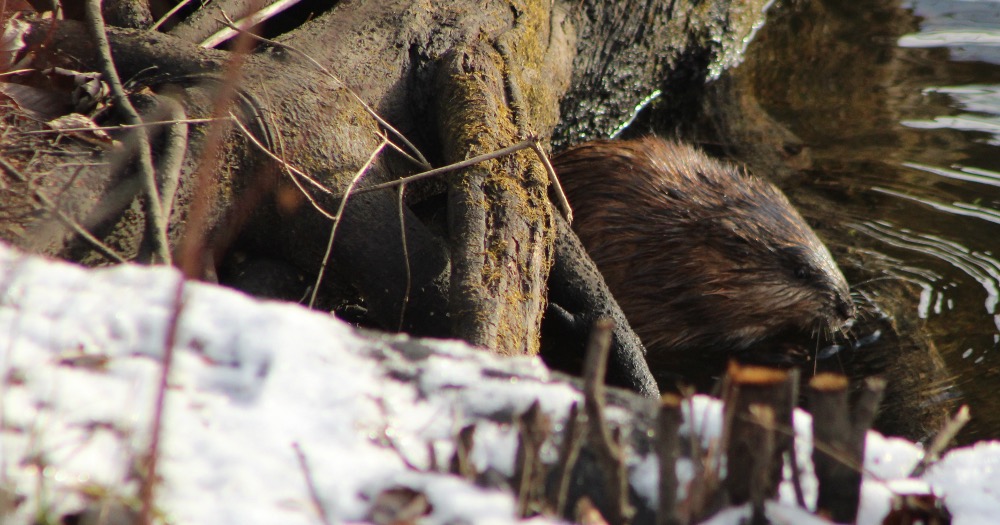
Step into the enchanting world of Over and Under the Snow by Kate Messner, where winter unveils the secrets of animal survival. This article explores the fascinating narratives of creatures above and below the snow, unraveling the mysteries of their adaptations. Whether you’re a teacher looking to enhance your classroom with lessons on animal adaptations or an enthusiast eager to understand the intricacies of winter survival, read on to uncover the amazing world created by Kate Messner in Over and Under the Snow.
Affiliate disclosure: As an Amazon Associate, I may earn commissions from qualifying purchases from Amazon.com. This is at no extra cost to you. If you’d like to learn more, check out my disclaimers page.
Don’t need all the info? Use this list to jump to the stuff you need:
Facts about animal adaptations
Over and Under the Snow animals
Over and Under the Snow activities
Kindergarten – winter animal needs
1st grade – winter animal heredity
2nd grade – animal seed dispersal
The Over and Under the Snow book is by Kate Messner and is a fantastic introduction to animal adaptations, the subnivean layer, and winter survival. If you’re unfamiliar with this book it follows a child that’s out skiing with their dad and the animals they encounter during the winter.
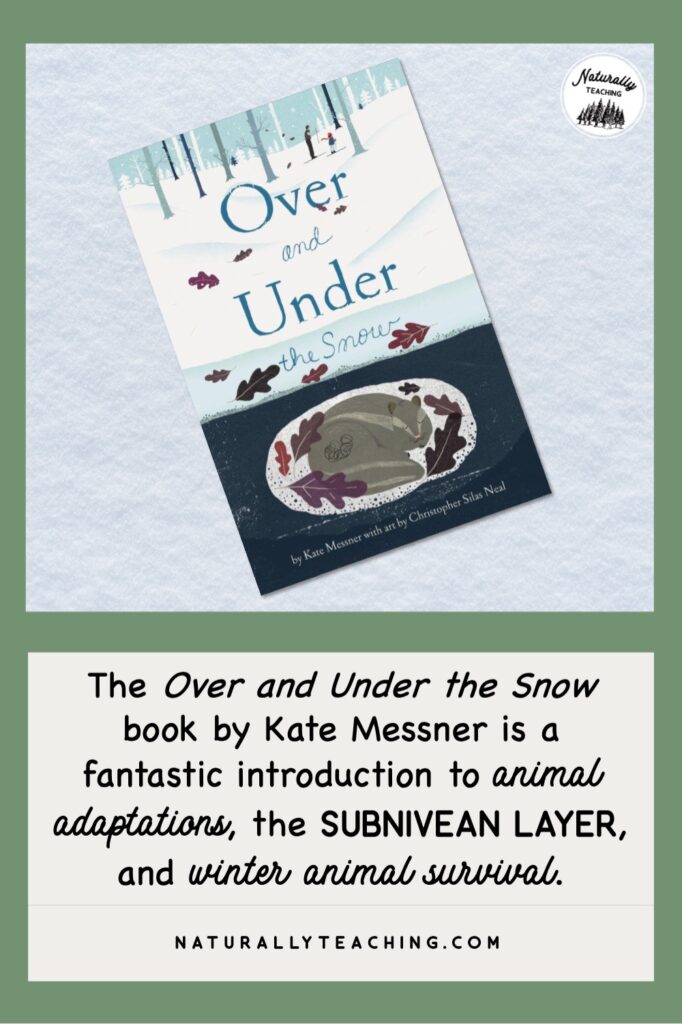
As the pages turn, the father explains to his child that there’s a lot happening with animals during the winter. They talk about animals that sleep under the snow like Bullfrogs and Black bears. He introduces his child to the subnivean layer, aka a secret kingdom, that small animals like voles and shrews use during the winter. As they ski they also talk about the animals, like deer and Great horned owls, that are above the snow and how they survive the scarcity of winter.
If you are a teacher that teaches about animal adaptations or animal needs in your elementary classroom, the Over and Under the Snow book is a great one to read to your class during the winter season.
Let’s get down to the nitty gritty and talk about facts about animal adaptations in winter. The hard truth is that if animals didn’t adapt in winter they would not survive. That being said, not all adaptations look (or act) the same. Here’s a short list of adaptations that animals could use to help them survive the season of scarcity:
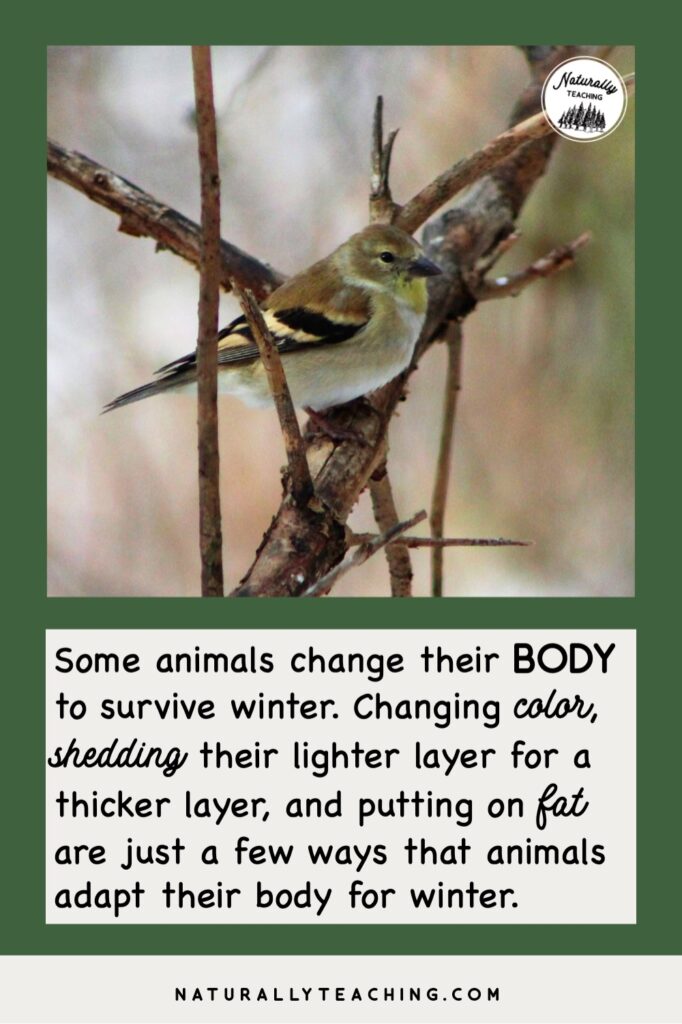
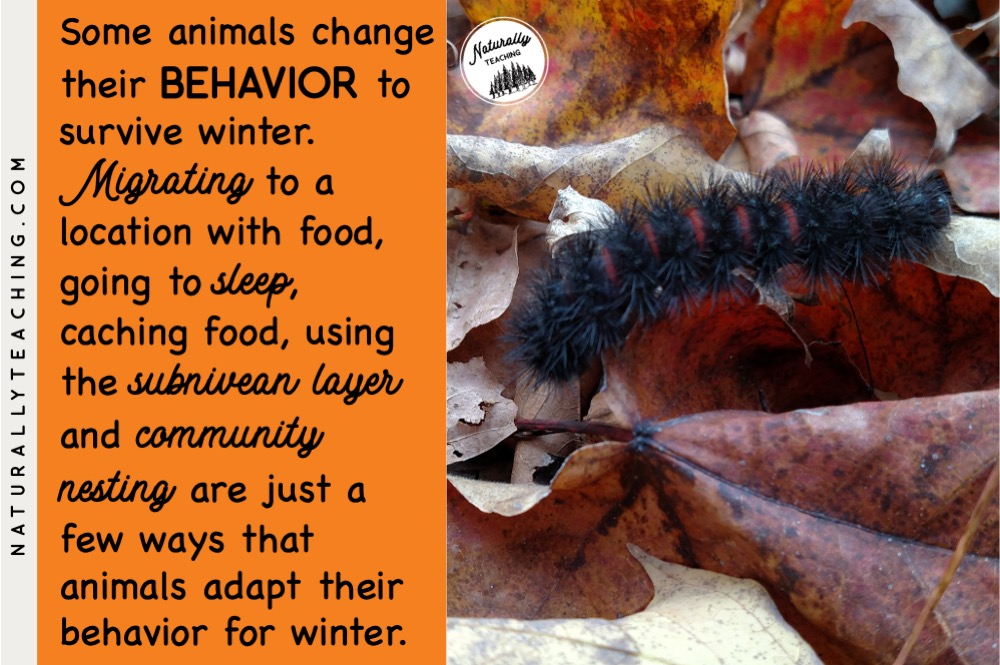
This is by no means an exhaustive list but can be a good place to start for winter animal adaptations. Do you have any other winter animal adaptations that you like to study in your classroom? Leave a comment to get the conversation flowing.
This book is a great introduction to animals and the adaptations that help them survive winter. So what are the Over and Under the Snow animals and their adaptations?
Some of the animals that are depicted in this book experience winter over the snow. These animals tend to be awake and adapt their bodies and behavior to be able to survive winter.
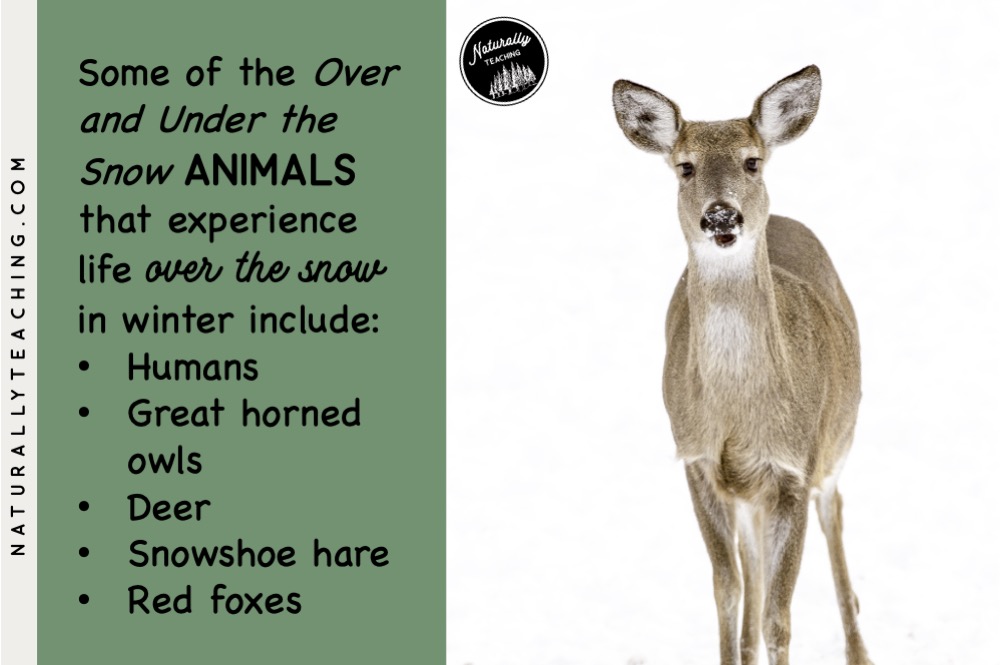
So which are the Over and Under the Snow animals that experience winter over the snow?
Some of the animals that are depicted in this book experience winter under the snow. These animals could be asleep or awake, depending on their species. These animals adapt their bodies and behavior accordingly to be able to survive winter.
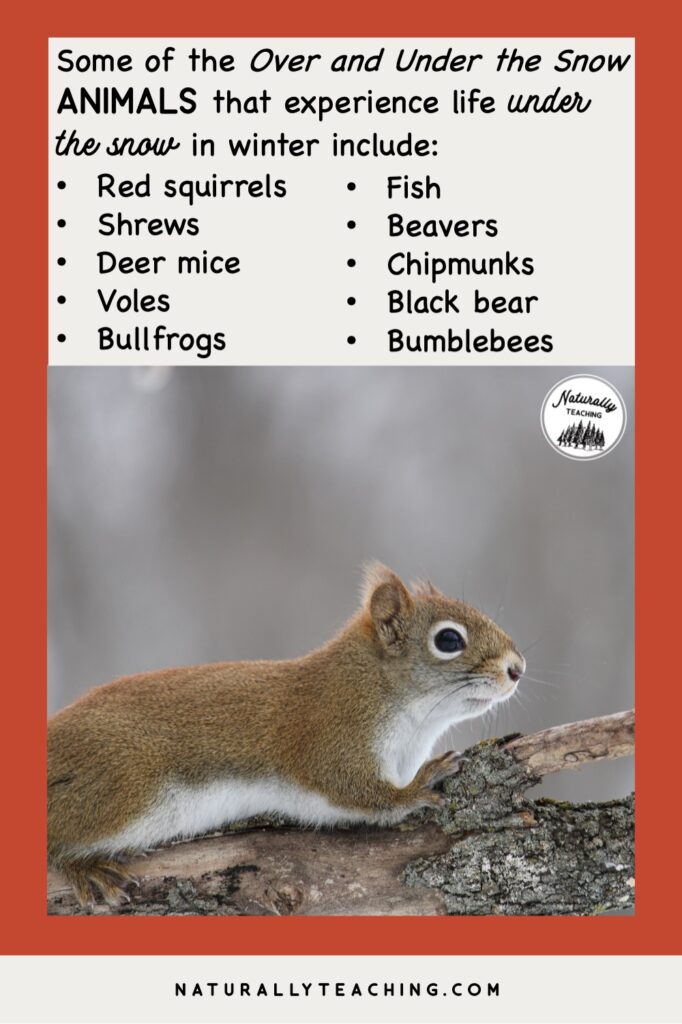
So which are the Over and Under the Snow animals that experience winter under the snow?
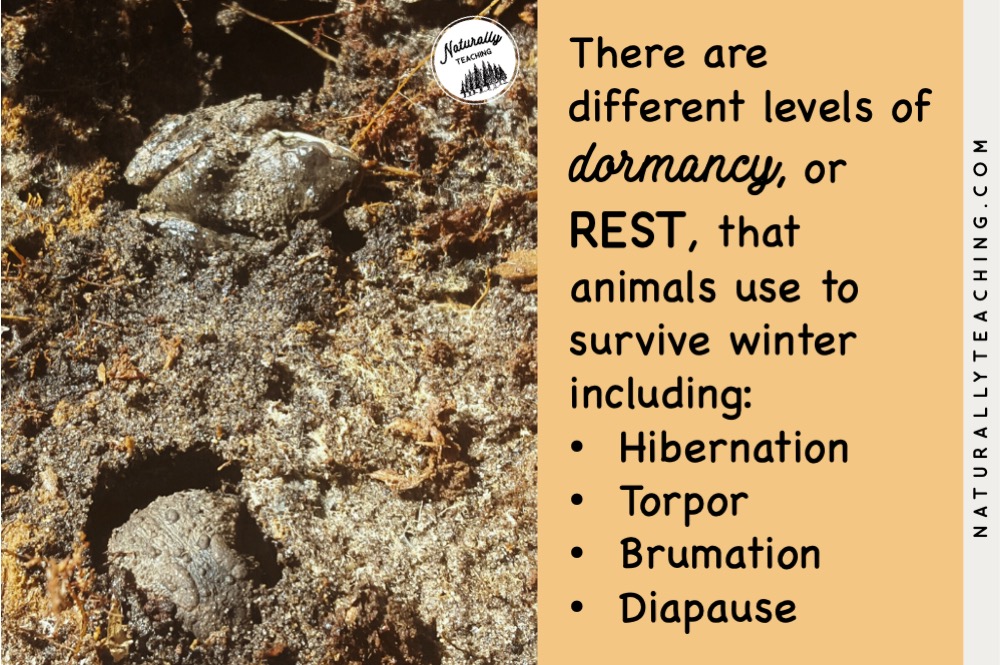
Using Over and Under the Snow to introduce science curriculum in winter can get your students excited and can lead to wonderfully rich activities.
Kindergarteners study animal needs under the Next Generation Science Standards (NGSS) and learning about animals in the winter could really highlight those needs (NGSS K-LS1-1). The reason that animals have to adapt for winter is because it’s a time of scarcity and it’s difficult for animals to meet their needs, providing you an easy bridge to your curriculum.
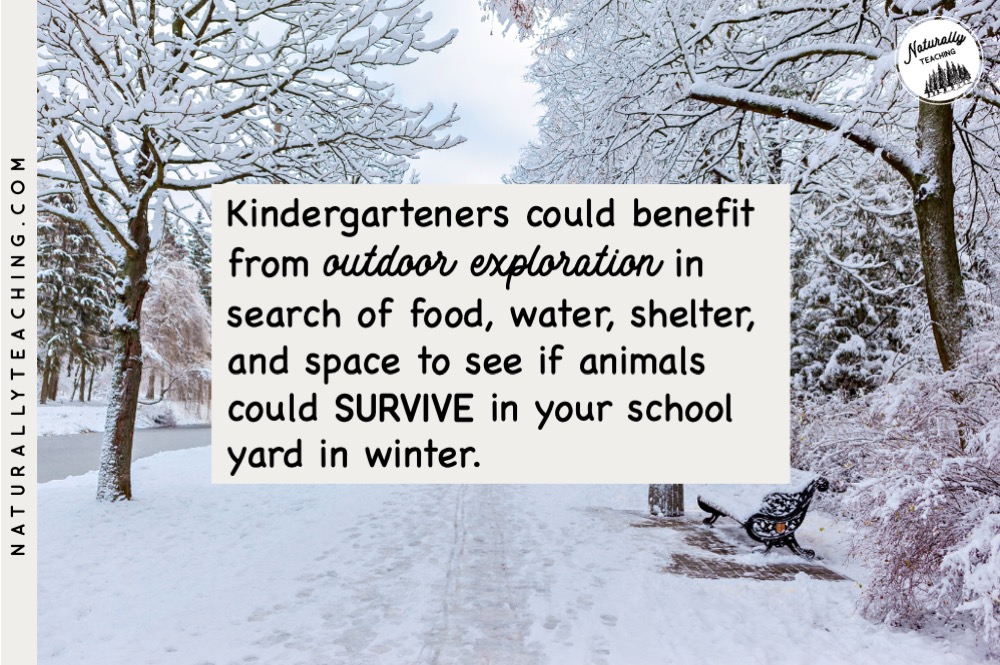
After reading Over and Under the Snow, have your students go into your school yard and try to find examples of food, shelter, water, and space. If you live where there’s snow, your kindergarteners will quickly learn that there isn’t much fresh liquid water around for the wildlife. After exploring your schoolyard for a given amount of time, call your students back and have a discussion about the things that they found. Do they think that their schoolyard has enough food, water, shelter, and space to support local animal needs?
First graders study animal heredity under the NGSS and learn about patterns in behavior of parents and offspring that help young survive (NGSS 1-LS1-2).
Animal adaptations are patterns in behavior that parents pass down to their offspring either inherently or by teaching. After you read aloud Over and Under the Snow, have a class discussion about the adaptations they notice in the book. Then, take your students outside and have them role play some of the adaptations they read about in the book.
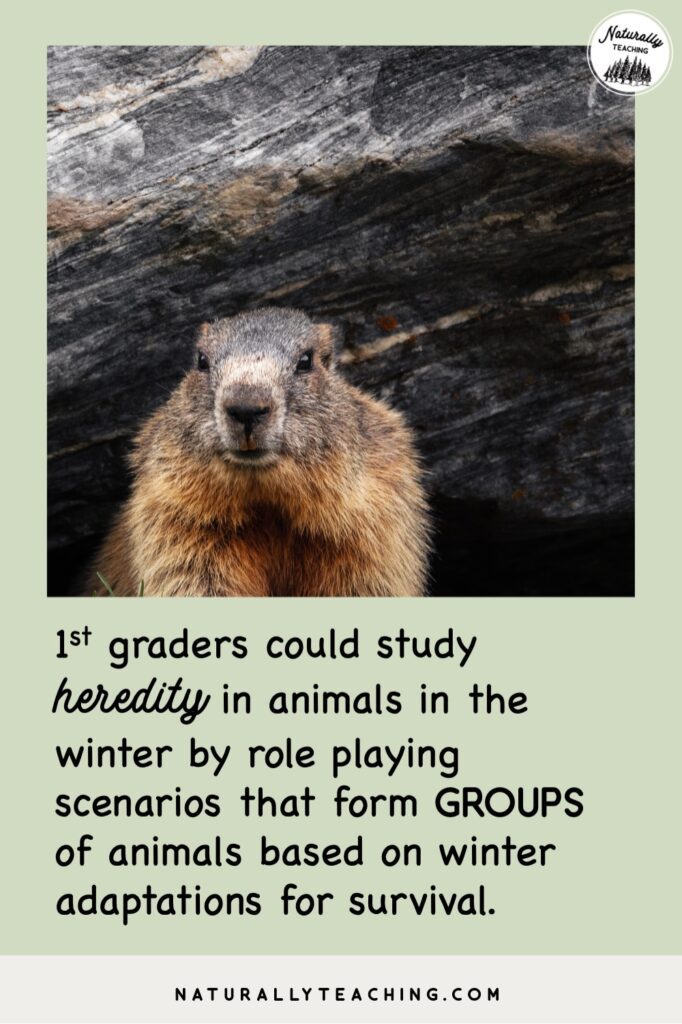
Give your students scenarios to act out. For example, tell your students they are going to make snowshoe hare families by looking around at their classmates and grouping together based on what color they’re wearing. When fall comes, Snowshoe hare lose their brown fur in favor of white fur and so do their offspring.
*Note: Students may nitpick and question a student that they don’t think is wearing the “right” color but the idea behind the activity is to recognize that animals of the same species will have the same adaptations.
Another scenario could be to have your students find a way to stay warm in the winter weather. This adaptation could require exploration and experimentation. Once they have found a method that keeps them warm, they have to talk to their classmates to find other students that discovered the same method of insulating. Children with the same method group together to make a “family”.
Some animals like flying squirrels huddle together to preserve warmth. Other animals like deer lose fur and grow thicker fur. Some animals like Woodchucks eat a lot and put on weight. Your students’ methods don’t need to emulate what’s happening in nature, but the goal would be for them to find other students that discovered the same method as them. This relates to animal adaptations because each species uses its own set of techniques to stay warm in winter but the parents pass along their adaptations to their offspring.
Second graders study how animals disperse seeds under the NGSS which can be experienced during all seasons, including winter (NGSS 2-LS2-2). There are references in both the text and the illustrations of Over and Under the Snow of animals eating seeds during the winter and could be a great introduction to the concept.
As you read Over and Under the Snow together as a class, have your students point out each time they see seeds either in the pictures or hear about them in the text. Tell your students that the seeds in the book are traveling from their home plant to a new location; can they spot how?
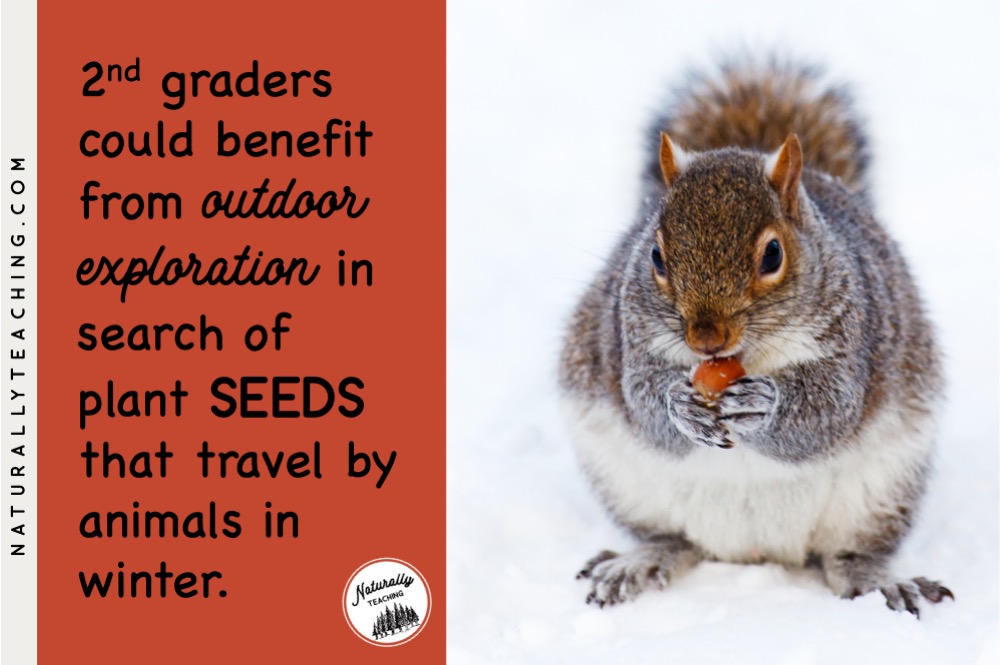
After talking about squirrels burying nuts for winter and animals eating seeds and pooping them out, it’s time to head outside. Go to your school yard and look for seeds that have traveled. Spend time looking at the dead heads of flowers to see if there’s evidence of animals eating the seeds; look for holes in the snow or dirt indicating squirrels are digging up their cached food; watch bird feeders to see how the birds are harvesting the seeds.
After looking for evidence of seed dispersal, give your students a chance to try to collect and disperse seeds in your school yard. Provide your students with simple tools such as white paper plates and cloth mittens to be able to gather seeds from flower heads or small shovels to dig under the snow for acorns and beech nuts. Once they collect the seeds they can try blowing, throwing, or dropping the seeds to see which way they travel best. (Feeling rusty on your seed traveling techniques? Check out “Seed Dispersal Types: 6 Innovative Ways Seeds Travel to New Places” for a refresher.)
As we conclude our exploration of the captivating world presented in Over and Under the Snow by Kate Messner, I hope this journey into the realms of animal adaptations and the secret subnivean layer has sparked inspiration for your classroom. Whether you choose to incorporate these insights directly or adapt them to suit your unique needs, your students are sure to reap the benefits of your time and dedication. Remember, the seamless integration of literature, science, and hands-on activities not only enriches the learning experience but also makes the most of your valuable time in the classroom. So, dive into the wonders of winter survival with your students, and let the magic of Over and Under the Snow continue to unfold in your educational journey!
Love the idea of using Over and Under the Snow in your kindergarten classroom this winter but don’t have time to put together activities for it? Check out my Snow and Winter Weather Mini Unit for Kindergarten with ELA and science activities that can be used alongside most snow-related picture books including this gem by Kate Messner.
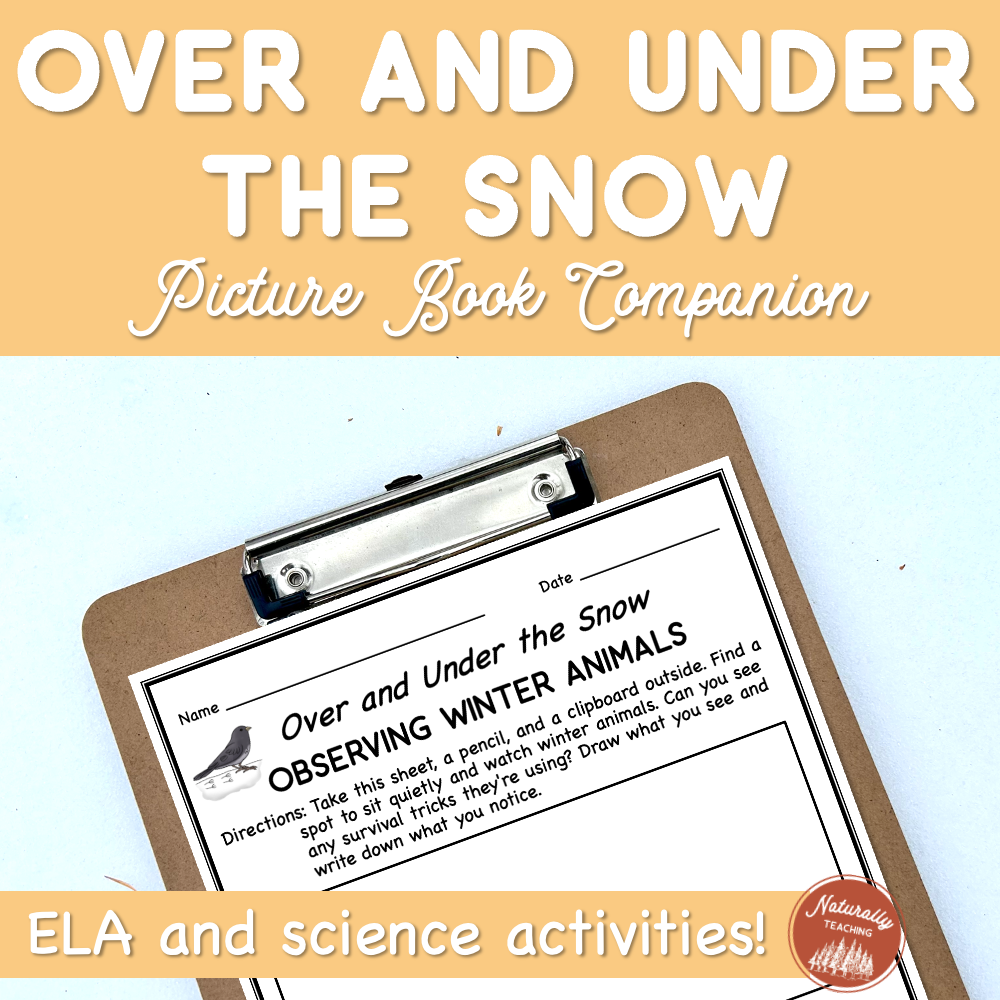
Are you a 3rd grade teacher looking to develop your students’ understanding of animal adaptations? Embrace the season and combine states of matter with weather this winter. Check out my “‘Over and Under the Snow’ Picture Book Companion for 3rd Grade” with ELA and animal adaptation science activities that can be used alongside the story.
Works Cited
Environmental Science and Forestry. (n.d.) Woodchuck. Retrieved from https://www.esf.edu/aec/adks/mammals/woodchuck.php#:~:text=Woodchucks%20begin%20hibernating%20in%20September,80%2D100%20beats%20per%20minute.
Affiliate Disclosure
I only endorse things that I’ve personally used, come highly recommended by trusted peers, or I’ve done extensive research on. As an Amazon Associate, I may earn commissions from qualifying purchases from Amazon.com. This is at no extra cost to you, the commission is covered by the company.
I am recommending products that I think will be genuinely helpful and useful, and not because of the small commissions that I receive. Please only purchase items if you believe that they will help you achieve your educational goals. If you’d like to learn more, check out my disclaimers page.
Do you have any amazing experiences using Over and Under the Snow by Kate Messner in your classroom? Describe them in the comments section to inspire a fellow elementary teacher to take action!
Check out this podcast episode for unique ways to teach with books!
2 thoughts on ““Over and Under the Snow” by Kate Messner: Teaching Animal Adaptations”